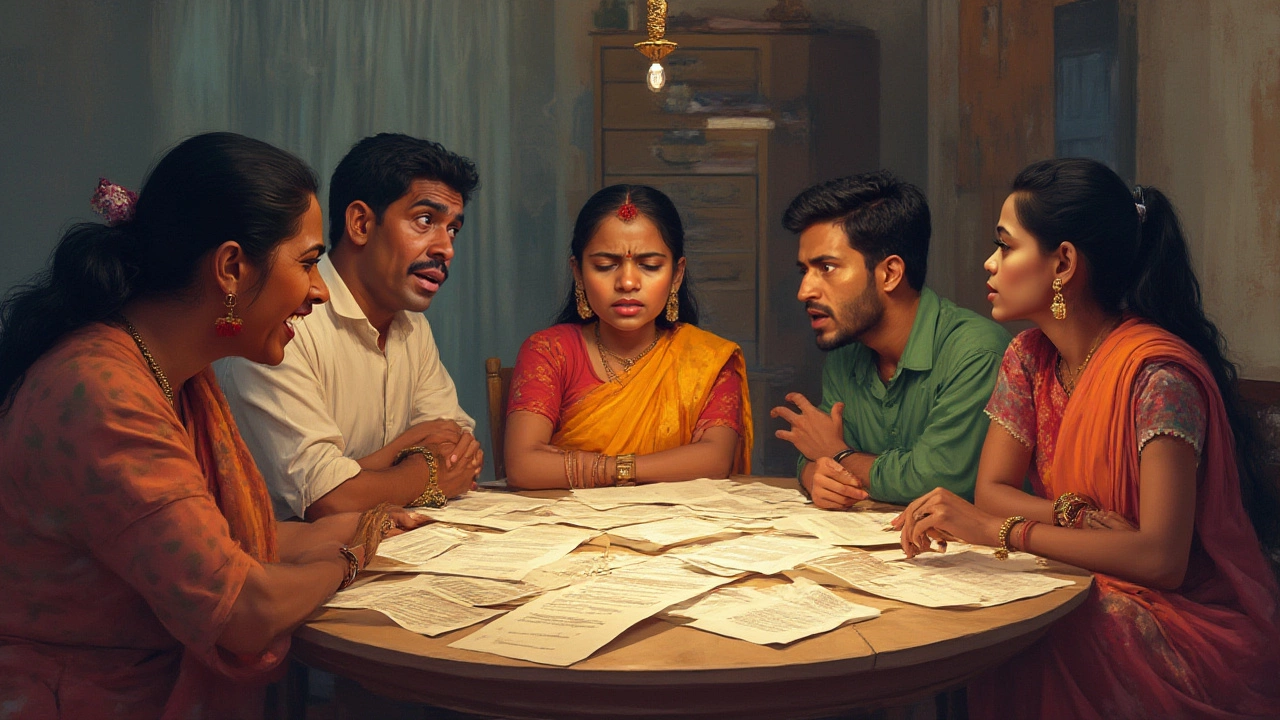Here’s something people rarely mention when discussing estate planning or philanthropy: not every fancy charitable tool in the toolbox is worth the hype. Charitable remainder trusts (CRTs) get trotted out in conversations around taxes and giving, promising slices of altruism and personal benefit. But as those shiny brochures get rolled up in the nearest junk drawer, the practical headaches often start to leak through the walls. If you’ve ever wondered whether a charitable remainder trust is all it’s cracked up to be—or what could go wrong—you're definitely not alone. It's high time to pull back the curtain on the disadvantages nobody loves talking about.
Complex Tax Rules and Ongoing Compliance Headaches
Ask anyone who's actually set up a CRT and you'll usually hear the same thing: the tax stuff gets old, fast. Sure, these trusts allow you to defer capital gains and snag an up-front charitable deduction. But you also open a can of ongoing headaches. The lump-sum tax deduction you receive is based on complicated actuarial formulae and ever-changing IRS rates (just check the latest AFR rates). If the value of your deduction is less than you estimate—or if interest rates move unfavorably—it can tank your tax planning.
But it’s not just the starting math. You’re also tied to annual tax filings unique to CRTs, which means IRS Form 5227 every single year. Get it wrong, misreport distributions, or trip up on calculating the income tiers (ordinary income, capital gains, tax-exempt income, return of principal)? The IRS could disallow deductions or, worse, penalize your trust. It’s no secret among tax lawyers in Wellington: keeping a CRT compliant is not something you hand off to your cousin with a bookkeeping side gig. You’ll pay for solid professional help—year after year.
The payout rules trip up even the best of us. Since CRTs are irrevocable, you’re locked into the distribution schedule you chose at the start—either a fixed percentage with charitable remainder unitrusts (CRUTs) or a fixed annuity with charitable remainder annuity trusts (CRATs). If markets tank and your unitrust’s assets take a hit, your payouts could shrink. And since distributions to you must follow specific "tier accounting" rules, you can’t just tap into tax-free money on a whim; those quirky tiers dictate exactly how funds are classified—and taxed. If you get a run of capital gains payouts, expect a higher tax bill than you hoped.
Managing a trust over potentially decades means any mistakes will get compounded. Here’s a hard stat: according to a 2022 IRS report, over 17% of CRTs had reporting errors severe enough to trigger audits. No one enjoys an audit—especially if it’s due to a misunderstood distribution rule from a decade ago. If you switch countries (hello, fellow Kiwis who also claim Aussie ties), extra cross-border tax headaches pop up, and few accountants want to untangle tax treaties just for you.
High Costs and Fees That Drain Value Over Time
Every trust comes with its own price tag, but CRTs are on the pricier side of the fence—both to set up and run. Setting up a CRT isn’t like opening a simple checking account. Most lawyers who specialize in charitable trusts charge anywhere from NZ$7,000 to NZ$20,000 upfront for drafting, review, actuarial calculations, and filing. And that doesn't include the fees you’ll fork out for financial advisors or custodians who’ll manage the trust’s assets.
The story doesn't end with the setup. CRTs require annual tax filings, plus TRUSTEE management (can be corporate trustees or individuals, but you should expect annual fees). Asset management fees, ranging from 0.5% to 2% of trust assets annually, add up especially if your trust holds a diverse investment portfolio. Here’s a breakdown of common costs:
| Type of Fee | Typical Range (NZD/year) |
|---|---|
| Legal/Admin Setup | 7,000 – 20,000 (one-time) |
| Trustee Fees | 2,000 – 7,500 |
| Tax Preparation | 1,500 – 3,000 |
| Financial Advisory | 0.5% – 2% of assets |
Add all this up over a 20-year lifespan, and the total can easily chew through 10%-15% of your starting gift. Unlike simple donor-advised funds (DAFs), which have much lower ongoing costs, CRTs are pricey across the board. For estates under NZ$1 million, a CRT can quickly become cost-ineffective. When you think about the returns and the impact on your heirs or charities, high fees can outweigh the supposed “tax-advantaged” nature you started with.
Another hidden cost? Trusteeship liability. If the trustee (even if it’s you, or your well-meaning brother) messes up the investments or fails to distribute the correct payout, they can be personally on the hook. That often pushes people to hire a corporate trustee—adding another layer of fees and paperwork. And the insurance costs for trustees have gone up, especially after a handful of well-documented legal cases in Australia and New Zealand where CRTs were mismanaged.
Don’t overlook state or local taxes, either. In New Zealand, trusts get scrutinized, and any mishap in reporting could void the trust’s tax-exempt status, dragging the entire structure into expensive court proceedings. So, you’re signing up for running costs that rarely go down, eat into your returns, and demand constant professional oversight just to stay afloat.

Irrevocability and Loss of Financial Flexibility
This is a big one that catches folks off guard. Once you transfer assets into a CRT, you can’t get them back. That funky word—irrevocable—means it's set in stone. There’s a finality to it. You lose ownership and control over whatever goes in, whether that's property, shares, or even a beloved art collection. The trust must pay you annual “income” based on the trust agreement, but the actual principal is off-limits for life—and what’s left goes to charity after you pass.
So, what if facing a personal financial emergency, or if you change your mind about the charity down the road? There's no “undo” button or emergency withdrawal here. For those who like to keep options open, CRTs can feel like a straitjacket. You can't simply call your trustee and say, "Hey, I need the principal back for a down payment on a new house." It's legally not yours anymore.
Even nominating the final charity can have its limits. If you picked a particular cause in 2025 and your views evolve—or if the organization goes rogue, merges, or dissolves—changing beneficiaries isn’t simple. Court approval or special amendments are needed, which is neither cheap nor guaranteed. In recent years, several high-profile CRTs faced complications when their chosen recipient charities closed doors or radically changed their mission, leaving trust creators frustrated and facing legal action to alter their plans.
Life happens. Maybe your health takes a hit, or you find yourself needing to support kids or grandkids in ways you didn’t plan for. CRTs won’t flex, won’t budge. The rules around income payouts don’t change even if the stock market nosedives, rental income dries up, or inflation eats into your purchasing power. Unlike revocable living trusts or basic DAFs, CRTs really mean you’re locked in—forever. You need to be very sure before signing on the dotted line, because backing out isn’t just hard, it’s usually impossible without giant legal costs and the charity’s permission.
Impact on Heirs, Legacy, and Estate Goals
People often focus on the tax breaks and good vibes from charitable giving—and forget to factor in what a CRT does to your own family’s inheritance. The basic rule: when you pass away (or after the income period ends), whatever’s left in the trust goes to the charity, not your heirs. In other words, your kids or partner only inherit the annual income payout while you’re alive, and lose out on the remaining principal. In New Zealand and similar systems, this can make a major dent in what you’d like to leave behind.
If you want to strike a balance between prudent estate planning and helping your family, CRTs complicate things. Sure, you can pair a CRT with a life insurance policy in an irrevocable life insurance trust (ILIT), but that’s another stack of fees and complexity. Plus, insurability isn’t guaranteed for everyone. Family members have mounted legal challenges against CRTs, especially cases where elderly parents set them up later in life without fully grasping the implications for grandchildren. These cases don’t always make front-page news, but the fallout is real and messy.
Another sticky point: if market returns outpace the trust’s payouts, there may be a larger gift left for charity at the expense of your heirs. If returns fall short, both you and the final charity can come away with less than planned. There are CRT horror stories from the early 2000s—especially after the Dot-Com bubble burst—where trust assets dropped so much that both the donor's income and the charity portion were a fraction of what the slick planners projected. So, unless you have a crystal ball for the next twenty years, you’re rolling the dice a bit with legacy planning.
Want to change your family's future plan, help a relative with special needs, or redirect assets after a big life change? Sorry—the CRT is famously rigid. Some people use alternative strategies like charitable bequests or family foundations to keep things more flexible. Also, for smaller estates, CRTs can accidentally trigger interference from government planning around gifts and parental support, especially if family members go on to need public assistance or long-term care.
Before diving into a CRT, double-check every angle, especially when it comes to your loved ones. It pays to ask the awkward questions with your lawyer and financial planner: "What exactly are my heirs missing out on?" and "Is this the best way to balance my giving and family legacy?" Sometimes it turns out a simpler solution does the trick—without locking you (or your family) into decades of rules, risks, and regrets.





